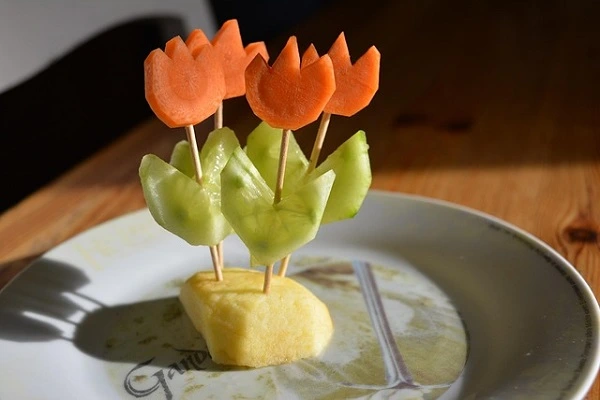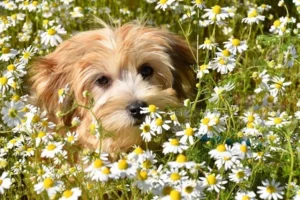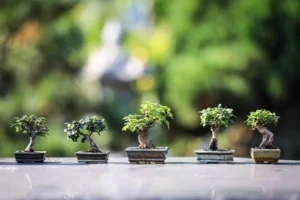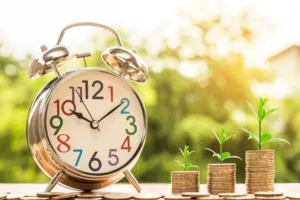Looking to bring a little color and flair to your everyday meals—without leaving your apartment? You’re in the right place. Edible flowers aren’t just beautiful—they’re totally growable, even if your “garden” is more wall-mounted than the backyard.
These delicate blooms do more than sit pretty. Many are packed with subtle flavors, from peppery to citrusy, making them a surprising addition to salads, teas, and even desserts. And the best part? They thrive in compact, vertical setups.
If you’ve already dipped your toes into indoor hydroponics or are just getting started, edible flowers are a perfect next step. They don’t need much space and can be surprisingly easy to care for.
So yes—you can grow vibrant, flavorful blossoms right in your tiny kitchen corner or sunny windowsill. All you need is a little guidance, a few seeds, and a dash of curiosity. Let’s get growing.
What Are Edible Flowers (And Why Should You Care)?
Edible flowers are exactly what they sound like—blooms that are safe to eat and often delicious. Think nasturtium with a peppery bite, or pansies that add a mild, minty note. Calendula and viola? They’re not just pretty faces—they bring color and subtle flavor to your plate.
New gardeners love these plants because they pull double duty. They look stunning and add something special to your meals. Plus, most of them stay compact, making them ideal for small, upright gardens or hydro towers.
Here’s the catch—not every flower is safe to eat. Some can actually be harmful, so it’s essential to stick with known edible varieties. Always check your plant’s label or source before adding anything to your salad.
And no, edible flowers aren’t just fancy garnishes for restaurant dishes. They’re a fun, flavorful way to elevate homegrown cooking. It’s not just a hobby—it’s a little bit of garden-to-table magic, right from your apartment wall.
Choosing the Right Edible Flowers for Apartment Growing
When space is limited and you’re just starting out, picking the right flowers can make all the difference. Some are better suited to small indoor gardens than others, especially when you’re working with a vertical hydroponic setup.
For beginners, go for flowers that are low maintenance, grow quickly, and don’t demand much root space. These qualities make them perfect for tight setups where every inch counts and every plant needs to earn its keep.
Some flowers also do better indoors than others. You want varieties that aren’t fussy about temperature or sunlight, and won’t overpower your living space with strong scents or heavy pollen. Remember, you’re sharing your home with these plants.
Avoid anything that attracts too many bugs or needs a backyard-style breeze to thrive. Focus instead on flowers that were practically made for life in a sunny window or under grow lights.
Here are a few excellent choices for apartment growers:
- Nasturtium – Peppery, slightly spicy flavor; fast and compact, perfect for vertical systems
- Viola – Mild and sweet; shallow roots, highly adaptable indoors
- Calendula – Earthy and slightly bitter; thrives in small containers or hydro setups
- Borage – Refreshing, cucumber-like taste; prefers cooler rooms but does well in hydro
- Dianthus – Clove-like and sweet; neat, low-growing, and great for tight spaces
Each of these blooms has its own charm, but all of them play well in small spaces. They won’t take over your apartment or overwhelm your air with perfume.
And since you’re growing them indoors, you won’t need to worry as much about pests or changing outdoor conditions. Just be sure to give them light, water, and room to breathe—and they’ll reward you with color and flavor.
Seeds, Starters, or Cuttings? What to Know Before You Plant
Before you start planting, it’s worth figuring out the best way to grow your edible flowers. Some varieties thrive from seed, while others are easier to grow from young plants or cuttings.
Seeds are often the most budget-friendly option. They’re great if you want to start from scratch and watch the entire process unfold. Nasturtiums and calendula, for example, are quick to germinate and usually grow well with minimal fuss.
Starters, or young plants, are perfect if you’d rather skip the delicate early stage. They’re a little more expensive, but ideal for beginners who want a head start. Violas and dianthus often transplant well into small hydro systems or planters.
Cuttings can work too, but they’re usually better suited to gardeners with a bit more experience. Not every flower propagates easily this way, so it’s less common for edible varieties—especially in indoor setups.
Now, where should you get your plants? Both online shops and local garden centers have their pros. Local stores often carry regionally suited plants and staff who can answer questions. Online sellers offer a bigger selection, especially if you’re after something unique.
Wherever you buy, the golden rule is to make sure the flowers are safe to eat. Look for terms like “culinary use”, “edible-certified,” or “safe for consumption” on the label or product description. Not every seed packet or plant in the flower aisle is meant for the dinner plate.
It’s easy to get caught up in pretty petals, but safety first—your salad deserves more than just good looks. A little label reading goes a long way.
Your First Vertical Garden Setup for Edible Flowers (No Engineering Degree Needed)
Starting a vertical garden doesn’t mean you need to be an expert or own power tools. There are plenty of simple, plug-and-play systems available that snap together in minutes. Many are designed specifically for small spaces—perfect for apartments or balconies.
Stackable planters, tower gardens, and hydroponic columns are all great choices. Look for kits labeled for indoor use, as they often come with helpful features like built-in lights or compact reservoirs. The goal is ease, not complexity.
When it comes to growing mediums, keep it light and airy. Coco coir is a beginner favorite—it holds moisture without getting soggy. Perlite mixed with coco or peat adds structure and helps with drainage. Both are clean, mess-free, and ideal for indoor use.
Light is just as important as water for flowers. If your setup gets 6+ hours of sunlight through a window, you’re in good shape. If not, no problem—LED grow lights can give your plants the full spectrum they need to bloom beautifully indoors.
Edible flowers appreciate consistent moisture, but not wet feet. That means your system should allow water to flow and drain without pooling. If you’re using a hydroponic tower, check that your pump cycles water regularly and doesn’t let roots dry out or stay soaked.
It’s all about balance. The right environment will keep your flowers happy, your apartment tidy, and your harvests coming with minimal effort. Once it’s set up, maintenance is surprisingly low—and the payoff is worth it.
Harvesting and Enjoying Your First Blooms
The moment your edible flowers begin to bloom, it’s tempting to pluck them right away—but timing matters. For the best taste and texture, harvest in the morning, just after the petals open and before the sun causes them to wilt.
Use clean scissors and snip the flowers gently, avoiding any damaged or browning petals. You want blooms that are vibrant and fully open, but still tender. Younger flowers often have a milder flavor, while older ones can be more intense.
Once harvested, give them a gentle rinse in cool water to remove dust or any tiny bugs. Let them dry on a clean towel. Always double-check that what you picked is truly edible—safety first, especially if you’re growing multiple varieties.
Edible flowers are delicate, so they won’t last long in the fridge. Store them in a paper towel-lined container and use them within a day or two. The fresher they are, the better they taste and look on your plate.
If you’re wondering how to use them, start simple. Sprinkle petals on salads for a colorful twist. Add them to herbal teas or lemonade for a fancy feel. You can even freeze whole flowers in ice cube trays for stunning drinks.
For something a little more filling, try this: Nasturtium Cream Cheese Spread. Just chop a handful of clean nasturtium petals and stir them into softened cream cheese with a pinch of salt and lemon zest. Spread it on toast or crackers—it’s peppery, creamy, and completely unexpected.
There’s no need to get fancy right away. Just experiment, taste, and enjoy the fun of growing something beautiful and edible, right from your own space.
Keeping It Going – What to Do After the First Bloom Cycle
So your first blooms have come and gone—now what? Good news: this doesn’t have to be a one-time thing. With a little planning, you can keep those flowers coming again and again.
Some edible flowers, like nasturtiums and calendula, produce seeds you can save. Let a few blooms mature fully, then dry and store the seeds in a cool, dry place. It’s a simple way to grow your next round without spending more.
If you’re using a hydroponic setup, it’s easy to swap out plants. Just lift the net cups, clean out the roots, and start fresh. Reusing the same system keeps things tidy and makes replanting feel like a quick reset, not a full teardown.
Want a steady supply of color and flavor? Try staggered planting. Start new seeds every two weeks, so you always have something blooming. This works especially well in towers or tiered setups—one row finishes, another begins.
You can also rotate different flower types. Grow violas early in the year when it’s cooler, then switch to borage or nasturtiums when things warm up. A little variety keeps your indoor garden exciting.
Remember—flowers don’t have to be one-hit wonders. With the right rhythm, your compact space can keep producing beautiful, edible blooms month after month. It’s all about working with your space, not against it.
You’re a Flower Farmer Now (Yes, Even in a Studio Apartment)
It might feel a little surreal, but yes—you’re officially growing edible flowers. And not just growing them—you’re harvesting, tasting, and bringing a splash of color to your kitchen straight from your vertical garden.
Indoor flower farming doesn’t require acres of land or a greenhouse. It just takes curiosity, a bit of light, and the willingness to try. Once you see those first petals bloom, you’ll realize how rewarding it really is.
Don’t be afraid to experiment. Try a new flower, mix up flavors, or test different planting schedules. Every setup is a chance to learn—and every bloom is something to celebrate.
And when you do get that first batch of petals sprinkled on your salad or frozen into a drink, share it! Post it, show it off, or even gift a few to a friend. This is homegrown creativity at its finest.
So, what flower will you try first? Nasturtium? Viola? Something totally unexpected? Whatever you choose, your little indoor garden just got a lot more colorful—and a lot more fun.




